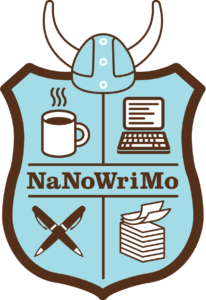Quick links, bringing you great articles on writing from all over the web.
Are you a little iffy on your rhetorical devices and want to add a little spice to your writing, no matter the genre? Jamie Gold has got you covered by helping you learn more about these literary tools and how you can use them to enhance your writing.
~ * ~
Strengthen Your Writing with Rhetorical Devices
by Jami Gold on June 30, 2016
![]() Some in the literary community assume that genre writers don’t care about the deeper aspects of writing craft. While it’s true that literary fiction is more well-known for its use of figurative and lyrical language, genre fiction can use the same literary tools.
Some in the literary community assume that genre writers don’t care about the deeper aspects of writing craft. While it’s true that literary fiction is more well-known for its use of figurative and lyrical language, genre fiction can use the same literary tools.
Now, if you’re anything like me, and your English or grammar instruction was less than ideal, you might not be familiar with the term rhetorical devices. I certainly wasn’t.
When I first heard the term, I assumed it had something to do with arguing or making a point, like a rhetorical question. Eh, in a way, I wasn’t too far off. But once I did learn about them, I quickly became aware of how using rhetorical devices can strengthen our writing—even if we’re writing genre stories. *grin*
What Are Rhetorical Devices?
Rhetorical devices are simply ways to use language to affect our audience. We probably use several of these methods without realizing there are other similar tools sitting right alongside them in the literary toolbox.
~ * ~
If you liked this article, please share. If you have suggestions for further articles, articles you would like to submit, or just general comments, please contact me at paula@publetariat.com or leave a message below.

 Part of the Indie Author Series
Part of the Indie Author Series About three years ago, then-VP, Digital Content and GM of Barnes and Noble’s Nook Press division Theresa Horner sat down with GoodEReader at the Frankfurt Book Fair to discuss the state of the company, namely its self-publishing option and its ebook self-publishing platform. She posed the question as to what it would take to effectively compete with Amazon. Our response–which was not at all tongue in cheek–was for the retailer to stop banning indie authors’ books from brick-and-mortar stores. If Nook Press had developed a viable print-on-demand option and then told authors there was even a possibility of seeing their titles in their local bookstore on the condition that they pulled their books from Amazon’s exclusive KDP Select program, authors would have jumped at the chance.
About three years ago, then-VP, Digital Content and GM of Barnes and Noble’s Nook Press division Theresa Horner sat down with GoodEReader at the Frankfurt Book Fair to discuss the state of the company, namely its self-publishing option and its ebook self-publishing platform. She posed the question as to what it would take to effectively compete with Amazon. Our response–which was not at all tongue in cheek–was for the retailer to stop banning indie authors’ books from brick-and-mortar stores. If Nook Press had developed a viable print-on-demand option and then told authors there was even a possibility of seeing their titles in their local bookstore on the condition that they pulled their books from Amazon’s exclusive KDP Select program, authors would have jumped at the chance. When I finished my latest book, Finding Travis, a time travel story, I sent it out to beta readers and prepared to self-publish as I always do. But then a friend began broadcasting the news that she had entered her latest book in the Kindle Scout program and was looking for nominations. I remembered that another friend had entered his book in the program months ago, and had won the coveted publishing contract with Amazon. Because I really, really liked this new book of mine, and because I had built up quite a decent fan base, I decided to try Kindle Scout for myself.
When I finished my latest book, Finding Travis, a time travel story, I sent it out to beta readers and prepared to self-publish as I always do. But then a friend began broadcasting the news that she had entered her latest book in the Kindle Scout program and was looking for nominations. I remembered that another friend had entered his book in the program months ago, and had won the coveted publishing contract with Amazon. Because I really, really liked this new book of mine, and because I had built up quite a decent fan base, I decided to try Kindle Scout for myself. Hi! I am going to be traveling for a few days but I will be back as soon as I land and can find wifi! I will be going across the international dateline and I am horrible at time change, but I should be back online by sometime Monday(ish?).
Hi! I am going to be traveling for a few days but I will be back as soon as I land and can find wifi! I will be going across the international dateline and I am horrible at time change, but I should be back online by sometime Monday(ish?). For those new to Kindle publishing, questions often arise about the Kindle delivery cost. Some people aren’t sure what it is, who it affects, and if there’s a way to make it go away. Today, I’m going to give a quick overview of the fee and what it means to authors.
For those new to Kindle publishing, questions often arise about the Kindle delivery cost. Some people aren’t sure what it is, who it affects, and if there’s a way to make it go away. Today, I’m going to give a quick overview of the fee and what it means to authors.






 During the Inaugural Indie Author Day on October 8, 2016, libraries from all across North America will host their own local author events with the support of the Indie Author Day team. In addition to these local programs, each library’s indie community will come together for an
During the Inaugural Indie Author Day on October 8, 2016, libraries from all across North America will host their own local author events with the support of the Indie Author Day team. In addition to these local programs, each library’s indie community will come together for an 